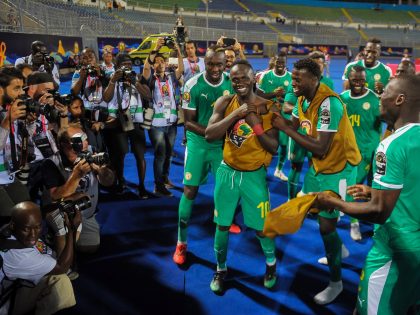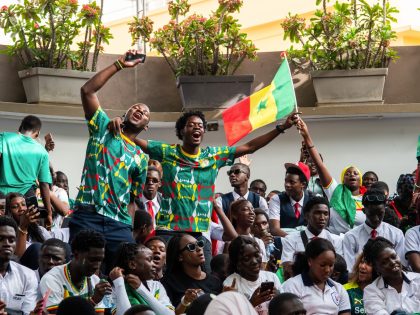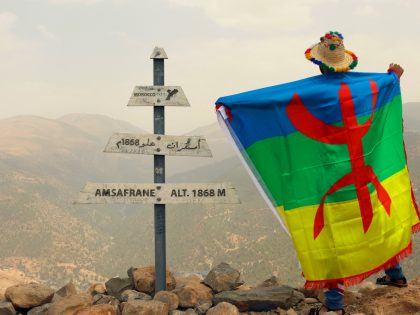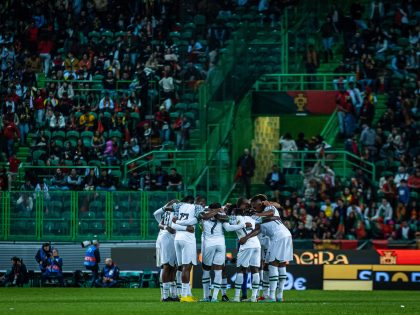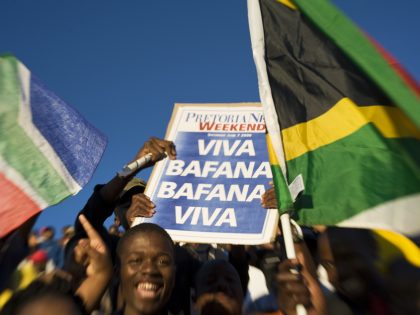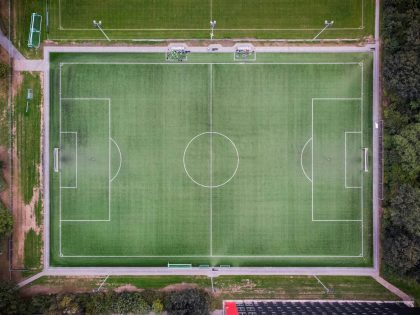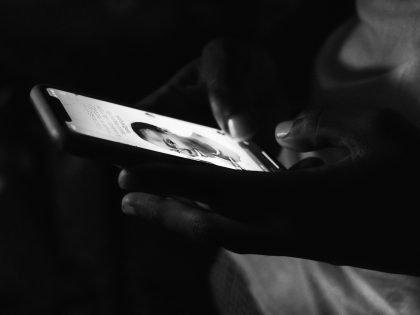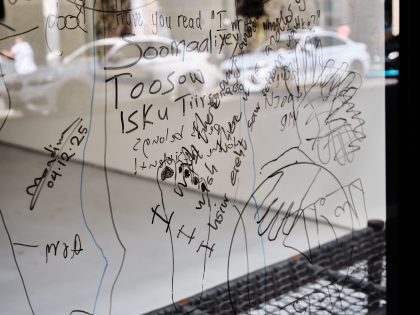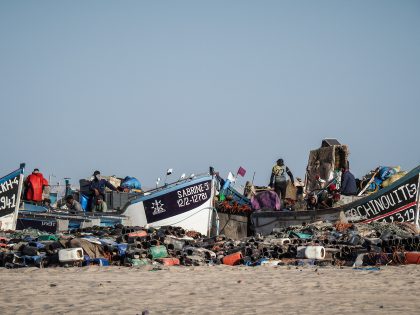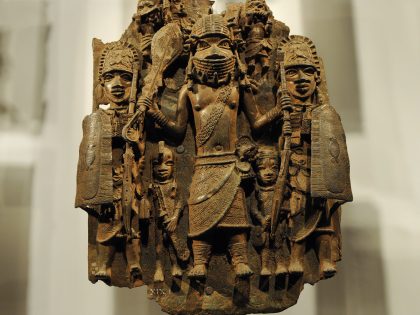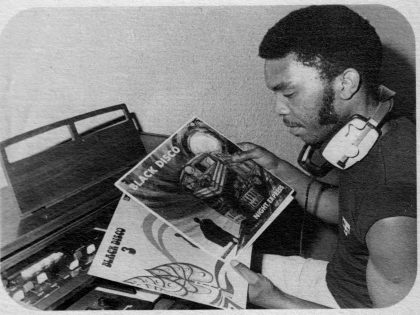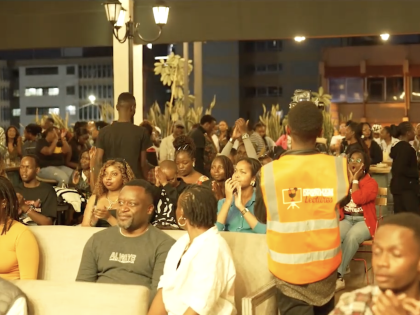Confronting Afrikaners’ cultural masochism
The frustration or inability to establish an identity that is free of hegemonic constructed myth – that ceases to be at odds with current reality.

South African artist Richardt Strydom’s photography is beautiful to me – albeit it in a perverse, guilty kind of way. Through self-observation and re-positioning, his art challenges ideas of power, agency and complicity through analyzing and dismantling notions of Afrikaner male identity.
“In my experience my forefathers, the previous generation, were the only ones to speak – the only ones who were heard and the ones who forced their agency upon everyone and everything […] In their wake there are no spaces, not even the private, that remain untainted and undefiled. But I no longer consider their words as truth – their yarns of fancy and oppression. Their constructed identity and myths have long since become the objects of my dismantling.”
Strydom believes that, due to apartheid’s legacy of violence, hatred, and domination, certain Afrikaners have long been unable to “speak in a credible voice”. For them, Afrikanerdom’s legacy has been one of guilt and shame; underlined by a sense of ‘cultural masochism’ which has warped their identity, while it has created a ‘persecution complex’ for others.
Strydom explains, “Philosopher Johann Rossouw said that certain Afrikaners today attempt to deal with their sense of fear and disillusionment by resorting to various psychological strategies such as the revival of crude racism, and I think the latest Red October stunt is a good example of this. I also agree with Rossouw who suggests that this fear and disillusionment ‘can easily lead to a state of self-paralysis, where they start convincing themselves that they are a handful of civilized people delivered to an uncivilized, vengeful majority’.”
Violator II (above) is a work that addresses this theme of pseudo-persecution. It’s a double self-portrait that depicts self-inflicted violence, which is underlined by Freudian, Jungian and Nietzschean theories. “The scars and injuries represent psychological scars that manifest physically and may be perceived as both metaphorical and real.” Violator II also deals with the notion that the ‘self’ and the ‘other’ are one and the same: the perpetrator as victim and the victim as perpetrator. “The violence is directed at the Self by its own violent Other-side, while at the same time playing on what Valji and others describe as ‘the mythology that whites are the primary targets of [violent crime] merely because of their race’.”
Violator II forms part of his 2009 series A Verbis ad Verbera – From Words to Blows, which suggests that the Afrikaner male has a “crisis of representation” due to an “inability to speak in a credible voice” because of apartheid’s weighty baggage of ethnic guilt. In another work from A Verbis ad Verbera (above), entitled Speak and Spell, self-harm is evident. In the first frame the words “Daddy Fucked Me” are carved, capitalized onto his forearm, while the second frame depicts Strydom with his tongue split: a grotesque, speechless man-serpent. “In this series of works I try to express a symbolic cultural masochism that stems from the frustration or inability to establish an authentic identity that is free of hegemonic constructed myth – an identity that ceases to be at odds with current reality … A sense of entitlement, after all, is not equivalent to a sense of belonging.”
Strydom further explores notions of ‘cultural masochism’ in his 2012 series White Masks, which is informed by Frantz Fanon’s seminal work and Ngugi wa Thiong’o’s Decolonising the Mind, which posits that in order to be truly African one has to let go of discourses that frame Africans as ‘other’.
Strydom’s Dubul’ ibhunu (“Kill the Boer”) portraits, which form part of this series, are an arresting comment about Afrikaner identity and a bold, unsettling statement about getting to grips with this uncomfortable, offensive ‘otherness’, and purging it from the modern Afrikaner’s psyche. Strydom adds, “In this body of work I invoke the notion of symbolic self-mortification as a means of transcendence. I see my own work as a representation of ‘being en route’ […] in other words, moving away from a constructed identity towards becoming someone other.”
His latest series delves deeper into notions of power, and the fluidity of identity. Entitled Dwang (“Coercion”), the images primarily focus on violation – and the subsequent subversion of it. During apartheid, it was mandatory for all pre-adolescent boys at state schools to undergo medical checks. Dwang references Strydom’s personal experiences of this: except this time round, the artist is pictured with adult, complicit male models, his fingers fondling their mouths.
These images are clearly erotically charged: the oral fixations are incredibly sensual. “I suppose one could argue that there is a pleasure in looking – it is voyeuristic and that is the eroticism of pictures,” says Strydom. “The double coding is intentional. I’m an artist because I’m addicted to images. I feel my interest in the manner images function – or can be exploited to shift meaning – is intimately tied up with the content of my work.”
Another major focus of Strydom’s work is making the private public. “Working with personal memories and experiences is a deliberate decision to delve into the subjective and present the personal archive to the public. The danger in that is that at times I feel it comes off narcissistic or vapid – so there’s also apprehension in that – I see that as part of the ugliness of self.”
According to Strydom, Dwang is about conjuring demons from the past. “I’m forcing myself and the viewer to confront a problematic image. I’m coercing my male peers, members of my ‘in-group’ to re-live a particular unpleasant experience from my own childhood – but one I share with other men of my generation. For me it’s a kind of collective exorcism. The whole context of Afrikaner nationalist education was so absurd that an incident involving a mob of middle aged men sticking their fingers in your mouth straight after fondling an entire school of young boys’ genitals, was an experience that seemed par for the course. It’s only when you reflect on it as an adult that you realise how invasive it was – how violent.”
Strydom’s work is also tied up with the act of looking – and the power play that accompanies it. For him, looking is never a neutral activity, it’s socially constructed. The artist and the model are therefore both depicted in the same frames of his images in order to “show how the artist inscribes or projects eroticism onto the body of the subject – the model, as a knowing subject and participant, is however complicit in this performance.” By doing so, Strydom subverts the old power dynamics of examiner/examinee. The violator’s power is shifted: the victim is now a complicit, consensual adult and not a helpless boy being probed.
Referencing Afrikaners’ struggle to forge an authentic identity, the struggle with ethnic guilt, as well as uncomfortable pre-teenage experiences, his twisted and sensual images attempt to dig deeper into his – and our – psyche. Through this process, he attempts to deconstruct and dismantle his own social conditioning as an Afrikaans man – and ultimately reimagine his sense of self. A self that is not bound, tied and gagged by apartheid ideology.

